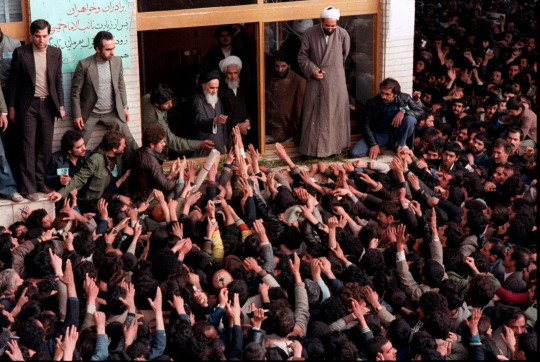#khomeini
Text
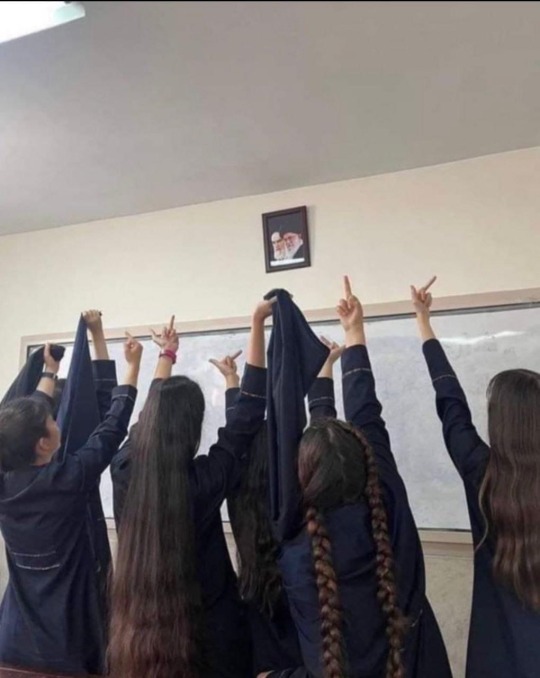
A picture from Iran, without hijab and with a lot of contempt.
#secular-jew#israel#jewish#judaism#israeli#jerusalem#diaspora#secular jew#secularjew#islam#Iran#hijab#without hijab#no hijab#fuck hijab#sharia#no sharia#khomeini#theocracy#fuck Iran
98 notes
·
View notes
Text

Khomeini’s Conquest
The months following the fall of the Shah was a springtime of revolution, a period of conflict and social struggle that provided a challenge to the new authorities. When workers returned to work, in many industries they did so under the control of the shoras (workers councils). Political organizations, suddenly free to operate after years of repression, began to flourish. Neighborhoods self-organized under the control of local committees. Universities became bases of left-wing opposition. The provinces were in rebellion.
How could such a broad based popular movement, with the oldest and largest left in the Middle East, result in the establishment of a clerical theocracy? While repression played a large role, the full story is far more complicated.
While the proletariat was strong and militant enough to overthrow the regime, they were not in a position to assert their hegemony over the movement. Moreover, almost immediately after the fall of the Shah, conflicts began to manifest within the coalition of revolutionary forces. While the movement was broad and popular, its leadership was drawn from the petit-bourgeoisie of the bazaari-clerical alliance. The problem for the new regime would therefore be to somehow establish undisputed political hegemony over this diverse patchwork of revolutionized groups, as well as the masses more broadly.
It was not merely through extreme violence in the streets that Khomeini and his supporters were able to solidify their leadership over the popular movement. Certainly, they did employ lumpen-thugs (calling themselves the Hezbollah) to attack opposition rallies and break strikes. But their success was equally due to ideological manipulation. If there was one overarching ideological trait of the 1979 revolution it was anti-imperialism. Far more than an outcome of some religious revival or resistance to modernity, the Islamic ideology of the day assumed the form of a Third Worldist populism, one which would become so hegemonic over the revolution that all questions relating to it would eventually be seen through its prism. This was especially the case for the left, who contributed to this ideological confusion. It was through the manipulation of anti-imperialist ideology that the Khomeinist clergy was able to secure and maintain its hegemony over the revolution.
A key factor in Khomeini’s ability to rapidly gain control over the movement lay in the near-total political vacuum that existed under the Shah’s dictatorship. The entire weight of the regime’s repression had been turned against the communist movement and the secular nationalists. For the masses of rural people who flooded into cities during the decade preceding the revolution, their traditional community having been disrupted by the land reform, the mosque was often the only place where they could find remnants of that community. However, mosques were not neutral, but under the control of the cleric, who found in this newly dispossessed population a ready audience. These cultural affinities were fused with a utopian-populist ideology that promised to end corruption and inaugurate a period of justice, uniting the various classes into an abstract people.
It is often suggested that the regime of Muhammad Reza Shah was hostile to Islam, or was pursuing a program of radical secularization. This is inaccurate: like his father, he was more interested in bringing religion under the control or service of the state. Although he sought modernization and national development, his approach to religion depended on how it served the state. For the Shah, the main enemy was the communist and left-wing opposition. Although the Pahlavi regime certainly promoted a nationalist ideology that emphasized the pre-Islamic past, the regime was not averse to using Islam when it served its purposes. It pursued a strategy that would be replicated throughout the region, encouraging religious ideology to counter the popularity of the Left. While the full repressive and propagandistic force of the state was wielded against the left, the Islamic forces enjoyed an incredible freedom, and even encouragement. Far from closing down mosques, the last Shah funded more mosques, prayer halls, and religious services. So long as they did not directly challenge the state or the monarchy, they were free to operate. This was especially the case if they directed their ire against godless communism. Many of those clergy who would be important figures in the Khomenist movement during the 1979 revolution featured prominently in magazines and newspapers, and regularly appeared on radio and television. Of course, there was repression against the religious political opposition, but only of groups that directly opposed the regime. Those figures who stayed away from direct discussion of politics were given room to maneuver, which was unthinkable for the left.
Khomeini’s intransigence and relative freedom of expression while in France soon made him the symbolic leader of the revolution — proof that symbols, when invested with enough power, become powers of their own. Khomeini enjoyed a network the communist movement could only dream of, with a strong following among middle and lower ranking clergy. As tapes of Khomieini’s speeches were widely shared and distributed, mosques everywhere soon became a platform for voicing dissent. During the revolutionary insurrection of 1978–79, the neighborhood committees that would later serve as an important base of the revolution were organized out of mosques in which the cleric was in control. These were increasingly controlled by a centralized revolutionary committee composed of Khomieni’s supporters. Those that had remained independent were soon brought under control. These committees soon began to organize militias.[19] Over time, these committees were all brought to heel, usually through violent repression. What they couldn’t dominate by means of loyalists, they broke through frontal repression. But it was in Kurdistan where the autonomy from the central government was maintained the longest. This partially explains the repression that the state has always levied against the people there, who never fully accepted the Islamic Republic.
On November 7th, 1979 Khomeinist students took over the American Embassy. The crisis came at a perfect moment, when economic problems and frustration with the revolution was beginning to grow. One cannot understand the hostage crisis unless one recognizes that it was less about conflict with the US than about defeating the domestic opposition, particularly the Marxist guerrilla groups. It had the dual outcome of both forcing the resignation of the liberal nationalist provisional government and defeating the radical left, who still battled for hegemony over the anti-imperialist revolution. Prior to the hostage crisis, the new regime had no intention of opposing the United States. In this sense, the embassy takeover was the anti-imperialist spectacle perfected: by drawing attention away from the struggles taking place in the rest of the country, students who only recently would have been seen by their Marxist counterparts as religious fanatics and rectionaries could now present themselves as the vanguard of the anti-imperialist struggle. In this way, the crisis helped the religious factions defeat the left and secure their hegemony over the revolution.
From 1980 to 1983 the state launched a “cultural revolution” with the intention of purging the universities and educational institutions of radical left influence. Schools were shut down, faculty purged. Resistance was met with severe repression, leading to fierce battles between leftist students and Islamist thugs. The same was the case with the worker’s councils in the factories, although in this case the initiative lay with the left-wing parties. Although the councils developed spontaneously out of the strike committees organized during the mass strike of 1978–79, they enjoyed the participation of the Left, who were invited to play a role in their direction. Whereas those workers councils that were dominated by the Khomeinists often tended to be corporatist in ideology, the more radical worker’s councils were democratic in nature.
This difference points to the decisive question — by no means unique to Iran — of the internal diversity of the working class. The rapid and uneven character of capitalist development over the previous decade had created a significant though not unsurpassable chasm, a phenomenon common to many nations in the global south, particularly where development is marked by advanced technology, as opposed to more primitive forms of accumulation. This chasm meant that there was an important cultural difference between “new” and “old” workers, one that the Islamists played upon and used against the left and working class movement. There was a marked difference between the newly-proletarianized manual laborers or unemployed workers and second generation urbanites, who enjoyed different sources of entertainment and tended to support the secular parties of the left. This included white collar workers, but also “skilled” workers in modern industries including oil, gas, and petrochemicals, which were central to the state and economy. Similar differences existed at the level of education, as well as in lifestyles. The clergy played upon this difference with their ideas of cultural imperialism. Imperialism was affiliated not merely with the rule of capital, but with all facets of Western culture, Marxism included. The upper sectors of the working class were characterized as Westernized, a trend consistent with Third World populism elsewhere, particularly in nations that are not among the farthest flung regions of the periphery and underdeveloped, but which are developing more rapidly in the direction of the global system.
Like fascist regimes before them, the Khomeini regime used disorder to establish order. They did not merely conquer the state but also seized power in the street, through the action of their revolutionary committees. By 1983 they had defeated all their political opponents. From the beginning, the Islamic Republic always incorporated a segment of the population into its police apparatus to surveil and repress the rest of the population. This policy allowed it to channel the cultural resentment of the lumpenproletariat into the regime’s repression, and marked an important departure from the preceding regime.
#Khomeini#iran#middle east#Anti-imperialism#history#Ill Will#insurrection#Class Struggle#Autonomy#anarchism#resistance#prison abolition#acab#jail#prisoners#autonomy#revolution#community building#practical anarchism#anarchist society#practical#practical anarchy#anarchy#daily posts#communism#anti capitalist#anti capitalism#late stage capitalism#organization#grassroots
11 notes
·
View notes
Text
"Ceux qui piétinent les peuples sont ceux qui parlent le plus des droits de l'homme."
Ayatollah Khomeini
#droits de l’homme#oppression#opprimés#oppresseurs#ayatollah khomeini#khomeini#iran news#iranian#iran#stand with iran#peuple
5 notes
·
View notes
Link
For over four decades, the Iranian people have suffered under the unrelenting death grip of the despotic, treacherous Islamic regime. Yet never before has the potential for liberation seemed as viable as it does now.
The Mossadegh Project
#iran#iran protests#iran protests 2022#iran revolution#mahsa amini#tehran#iranian#persian#nika shakarami#woman life freedom#islamic republic of iran#islamic fundamentalism#islamic extremists#ayatollah ruhollah khomeini#khomeini#ayatollah khomeini#tyranny#dictatorship#human rights#hijab#fascism#authoritarianism#despotism#iranian protests#iranian people#jina amini#opiran#iranian women#iranian girl#women's liberation
37 notes
·
View notes
Text
the reason I left the democratic party around five years ago was that I realized with horror that the progressive left was not only not interested in the perspective of apostates of islam but they were actively silencing so many brave activists who had suffered horribly under islamofascist regimes. The experience of these brave activists was not useful to the anglo-European (white) left and therefore had to be silenced because under the US political binary we can only process 'us' and 'them' and further diversity is seen as damaging to 'the cause' (i.e. the corporate sponsors of each party whose real interests we serve). Erica Le Bon, whose family immigrated from Iran after the Iranian revolution, explains the egregious error that western liberals are making and calls them out on their cultural ignorance and racism, making the point that the "white saviors" are no better, and sometimes worse, than the "white supremacists". Suffice it to say that if you don't know about the Arab conquests that killed 270 million people, the Arab slave trade that was every bit as bloody and destructive if not more, than the European one, Arab colonialism, Arab imperialism, the imposition of the death penalty for apostasy and homosexuality in so many islamic regimes, the history of the impact of Palestinian refugees on Jordan, Lebanon, and Egypt, and even the definitions of simple terms like murtad, kuffar, infidel, apostate, etc, you might not be educated on this issue and Le Bon is imploring people to stop casting white western narratives onto an issue that literally predates America and much of Europe as well.
#Israel#Gaza#Palestine#white savior#white supremacist#Arab slave trade#Arab conquests#Arab imperialism#Arab colonialism#infidel#murtad#kuffar#apostasy#Erica Le Bon#Persia#Iran#islamic regime of Iran#Iranian Revolution#Khomeini#God#Christ#Jesus#Salvation through Christ
1 note
·
View note
Photo
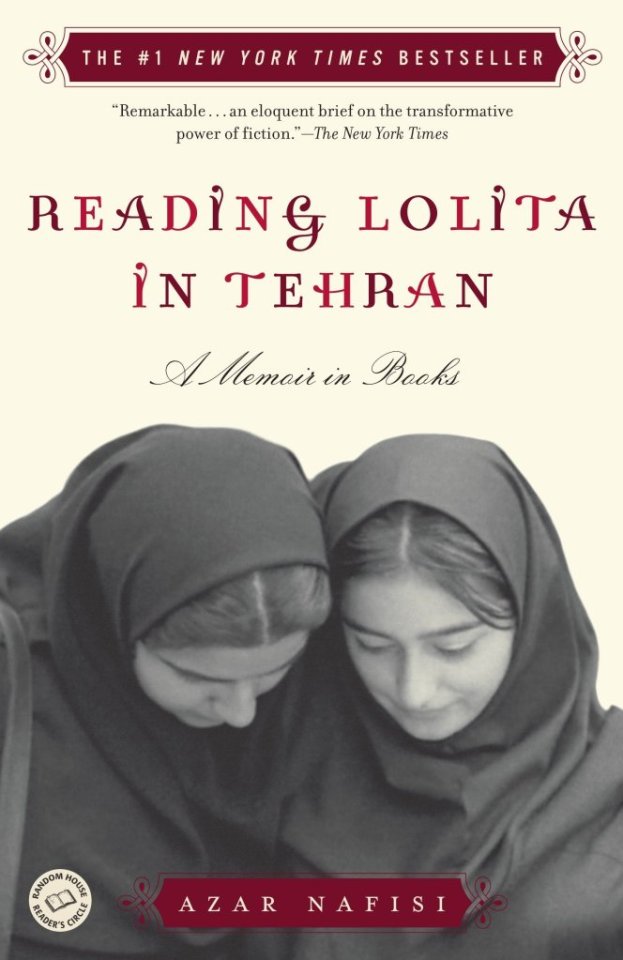
(via Reading Lolita in Tehran by Azar Nafisi)
The author, Azar Nafisi, and several of her girl students who formed the clandestine book discussion group to explore some of the forbidden classics in the Revolutionary Islamic Iran were relating themselves to Lolita where there was a Humbert in their lives in one form or another, restricting the freedom of their lives in some way and taking control over them in a manner that was loathed by them all.
The Humbert could take any form, from the uncle of one of the girls who tried to molest her in her childhood to the ‘Philosopher-King’ Ayatollah himself who, according to the author, endeavoured to build his dream kingdom by imposing the most stringent regulations and restricting the freedom of the subjects, particularly women. In a country ravaged by the so-called revolution and warfare with the neighbouring country, the sole means these women could find to live the lives of their dreams was to turn to fiction, because they believed that their lives of freedom could exist only in their minds, in the realm of imagination.
This book Reading Lolita in Tehran endeavours to speak to us about the power of imagination and fiction. As the group of women crazy for fiction delves into the fictional classics by Nabokov, Fitzgerald, Austen, and James, we realize how their true lives are intertwined with the narratives they discuss. The book is part memoir and part literary crit...
(Read full text on booksperience.org)
#books#reading#ayatollah#azar nafisi#book club#book discussion#criticism#fiction#f. scott fitzgerald#henry james#humbert#iranian literature#islamic culture#islamic republic of iran#jane austen#khomeini#literary#lolita#memoir#vladimir nabokov#non-fiction#persia#persian literature#reading lolita in tehran#tehran#women#booksperience
1 note
·
View note
Text
If nothing else, i love the symbolism~ Iranian protesters set fire to Ayatollah Khomeini's house
3 notes
·
View notes
Photo

https://twitter.com/Jerusalem_Post/status/1593553676445962240
3 notes
·
View notes
Text
By January 16, 1979, Reza Shah fled Iran during the Revolution. The revolution started off as a popular movement fueled by outrage against government extravagance, corruption, brutality, and the suppression of individual rights, before being taken over by Khomeini
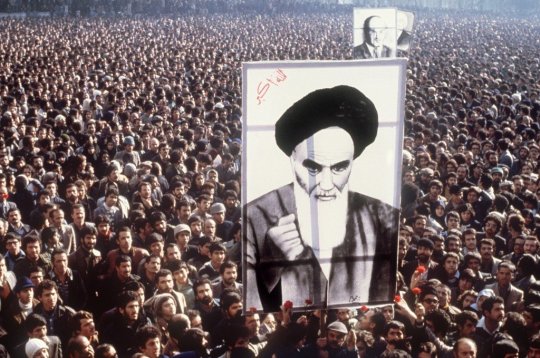
September 27 2022
2 notes
·
View notes
Text
Η Πολιτική Ζωή στην Ισλαμική Περσία, του Κοσμά Μεγαλομμάτη-1987
Η Πολιτική Ζωή στην Ισλαμική Περσία, του Κοσμά Μεγαλομμάτη: Εποπτεία 119, Ιανουάριος 1987, σελ. 19-28
Political Life in Islamic Iran, by Cosmas Megalommatis: Epopteia (‘Overview’) 119, January 1987, p. 19-28
Политическая жизнь в исламском Иране, (автор:) Кузьма Мегаломматис: Эпоптея («Обзор») 119, январь 1987 г., с. 19-28
——————————–
Συνήθεις αναγνώστες μου θα παραξενευθούν επειδή χρησιμοποιώ τον όρο ‘Περσία’ αντί ‘Ιράν’ στο συγκεκριμένο άρθρο, καθώς και σε πολλά άλλα άρθρα, εγκυκλοπαιδικά λήμματα, επιστημονικ΄ά άρθρα, και βιβλία δημοσιευμένα στην δεκαετία του 1980 και στις αρχές του 1990. Αυτό οφείλεται στο γεγονός ότι ο όρος αυτός είναι περισσότερο γνωστός και αγαπητός στο ελληνόφωνο αναγνωστικό κοινό, ενώ ο όρος ‘Ιράν’ ακούγεται μάλλον ξενικός. Τότε έγραφα για να πληροφορήσω και να κατατοπίσω σχετικά με θέματα ιστορικού, πνευματικού, θρησκευτικού και πολιτιστικού ενδιαφέροντος σχετιζόμενα με το Ιράν, καθώς και για υποθέσεις επιμελώς αποκρυμμένες σε όλο τον δυτικό κόσμο, όπως επίσης και για δημιουργήσω συμπάθεια προς το Ιράν εναντίον του οποίου στρέφονταν η Δυτική Ευρώπη, το σοβιετικό μπλοκ, οι ΗΠΑ, άλλες δυτικές χώρες, και τα τρισάθλια σκουπίδια των εθελόδουλων κυβερνητών του ανύπαρκτου και ανυπόστατου “αραβικού” κόσμου. Βεβαίως και τότε γνώριζα πολύ καλά ότι ο εξεπίτηδες προτιμώμενος από την μεροληπτική, αποικιοκρατική, δυτική βιβλιογραφία όρος ‘Περσία’ είναι ολότελα λαθεμένος, επειδή το Φαρς (Περσία) αποτελεί μόνον ένα μικρό τμήμα του ιστορικού Ιράν.
Several of my readers may be astounded because I use the term ‘Persia’ instead of ‘Iran’ in this article, as well as in many other articles, entries to encyclopedias, scholarly articles and books published in the 1980s and the early 1990s. This is due to the fact that this term is better known and preferred by the Greek-speaking readership, while the term ‘Iran’ sounds rather foreign to them. At the time, I was writing in order to inform and enlighten about historical, spiritual, religious and cultural topics pertaining to Iran, as well as about matters carefully hidden throughout the Western world, and in order to generate sympathy for Iran against which Western Europe, the Soviet bloc, the USA, other Western countries, and the wretched, docile and useless rulers of the non-existent “Arab” world had formed an alliance. Of course, even then, I was fully aware of the fact that the term ‘Persia’, which is intentionally supported by the biased colonial Western scholarship, is wrong; this is so because Fars (Persia) is only a small part of historical Iran.
Некоторые из моих читателей могут быть удивлены тем, что в этой статье, как и во многих других статьях, записях в энциклопедиях, научных статьях и книгах, изданных в 1980-х и начале 1990-х годов, я использую термин «Персия» вместо «Иран». Это связано с тем, что этот термин более известен и предпочитается грекоязычной читательской аудиторией, а термин «Иран» звучит для них довольно чуждо. В то время я писал, чтобы информировать и просвещать по историческим, духовным, религиозным и культурным темам, касающимся Ирана, а также по вопросам, тщательно скрываемым во всем западном мире, и чтобы вызвать симпатию к Ирану, против которой Западная Европа Советский блок, США, другие западные страны и жалкие, послушные и бесполезные правители несуществующего «арабского» мира образовали союз. Конечно, уже тогда я полностью осознавал тот факт, что термин «Персия», намеренно поддерживаемый предвзятой колониальной западной наукой, неверен; это так, потому что Фарс (Персия) — лишь малая часть исторического Ирана.
-----------------


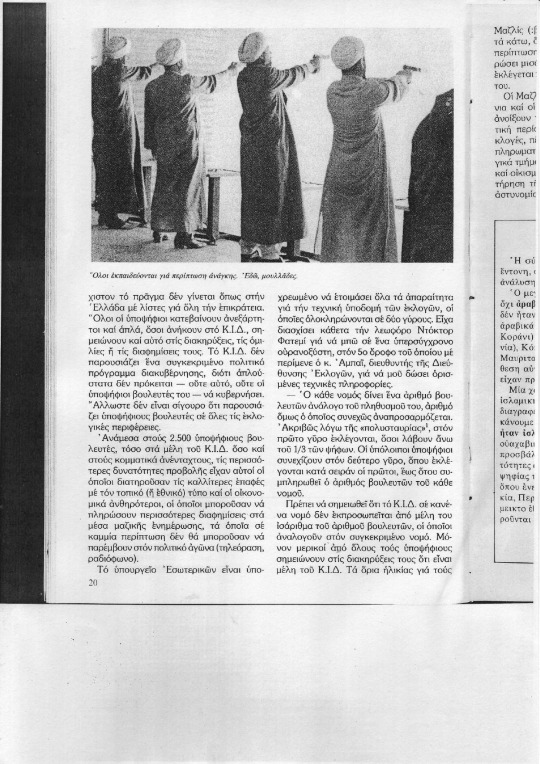
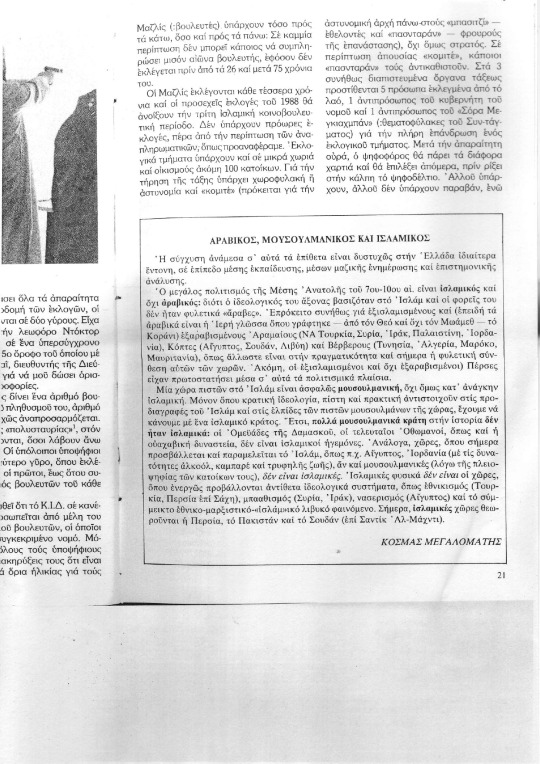


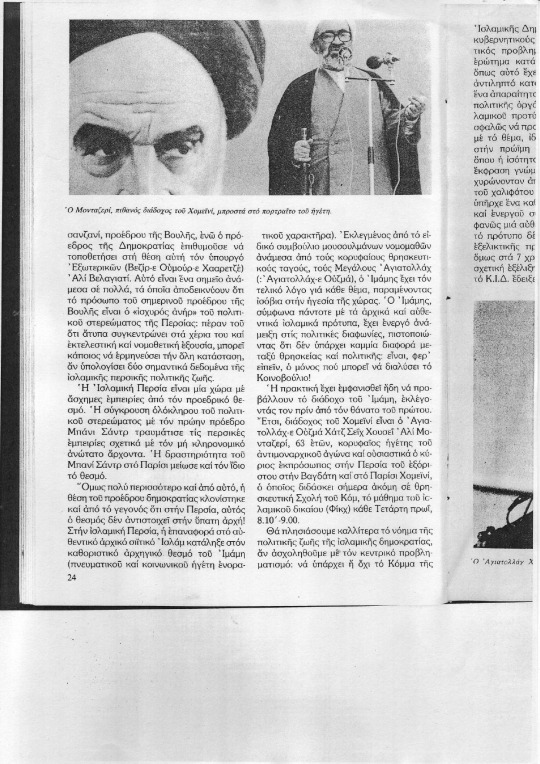


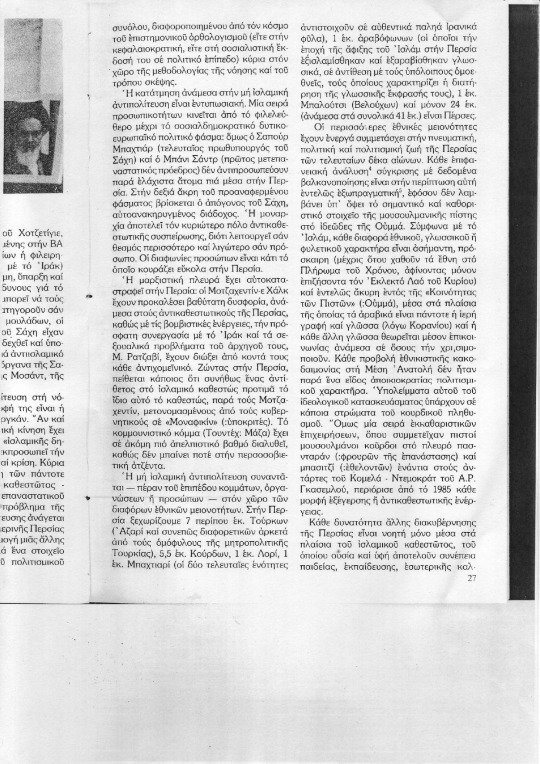
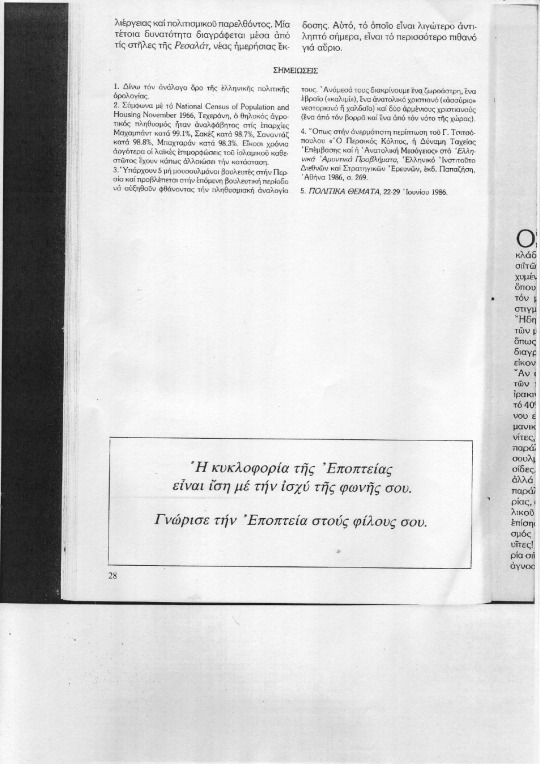
----------------------
Κατεβάστε το άρθρο σε PDF:
#Ιράν#Περσία#περσοϊρακινός πόλεμος#Ισλαμική δημοκρατία#Χομεϊνί#Iran#Persia#Islamic Republic#Ayatullah#Khomeini#Iran-Iraq war
0 notes
Text
A woman cuts into her birthday cake in Tehran, Persia in 1973, 6 years before the Islam ruined everything.

#secular-jew#israel#jewish#judaism#israeli#jerusalem#diaspora#secular jew#secularjew#islam#Iran#Persia#Islamic revolution#khomeini#1973#1979
16 notes
·
View notes
Link
Rushdie was stabbed in the neck and torso on stage at a lecture in New York State by Hadi Matar, a 24-year-old man in August 2022. He lost on eye and movement in his hand after a lengthy medical treatment.
#salman rushdie#fatwa#Khomeini#leader#Iran#Satanic Verses#anag.#seven#ira.#farmland#crops#news#world news
0 notes
Text
Where do people have freedom away from those Tlike terrorists?
Was gunna go with it and say teresa like and really similar when you Khomeini
Consider the IQ there
Prince Harry isn’t a real bright fella
Incest galore and Teresa Cooper can relate.
Very disturbing I think that may be Prince Harry could be a situation of somebody who is too incestuous, and it’s just messed with his head
I also think that they don’t have a lot of keys to longevity, and instead of being graceful about it, they decide to kill people left and right to assert authority, even though those people didn’t do anything to them
I think he’s just stupid, but it’s like why do we have somebody like him even he needs to have his title removed he’s not special he’s not even the one who’s supposed to be a king
And as far as Tom Hardy and the other Hardeeville, you know that we’re killing you all left and right, right what woods motherfuckers
Nobody likes Tom hardy no not even ivory. He’s a dumb and obnoxious racist
People like Tom lose BIG because smart people don’t want it or him
#prince Harry#chess#ha#killing innocent folks#king of Saudi Arabia#King Charles#rape Harry#fucking Incestuous loser#low Iq in royalty#Khomeini#89 would have been 110 if not for war
0 notes
Text
"Donna-Vita-Libertà" : il grido dell'Iran - Saedeh Lorestani
“Donna-Vita-Libertà” : il grido dell’Iran – Saedeh Lorestani
“Donna-Vita-Libertà”. Tre parole che hanno una storia millenaria. “Donna-Vita-Libertà”, lo slogan creato dopo l’uccisione di Mahsa Amini, una ragazza curda di 22 anni di origine iraniana da parte della Polizia della sicurezza morale e dell’hijab della Repubblica islamica, è oggi diventato il più grande messaggio femminista e di liberazione anti – rivoluzione.
La rivoluzione della Repubblica…

View On WordPress
0 notes
Photo

#SalmanRushdie agressé et poignardé à la gorge est en urgence absolue #Rushdie #khomeini #Iran https://www.instagram.com/p/ChK0ysGoqzYVIGF_z4UDKsZK7SrnNgHBU7VHXY0/?igshid=NGJjMDIxMWI=
0 notes
